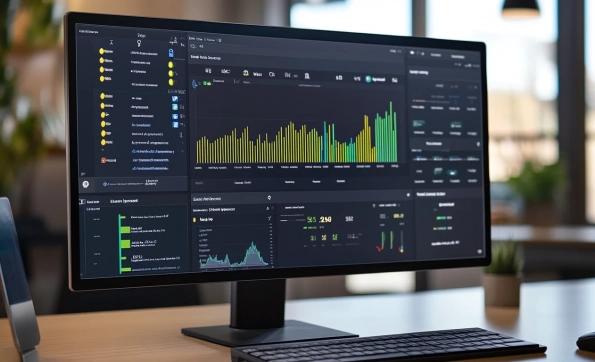In a world where cybersecurity threats are growing exponentially and becoming increasingly sophisticated, the importance of advanced security solutions can no longer be overstated. Against this backdrop, the Security Analytics market is projected to expand significantly, reaching an impressive market size of USD 45.98 billion by 2030. This near-futuristic projection underscores a robust compound annual growth rate (CAGR) of 16.1% from 2024, driven by the urgent need for sophisticated cybersecurity measures to combat the rising tide of cyber threats.
Rising Demand for Security Analytics
Escalating Cybersecurity Threats
As businesses, government entities, and individuals grapple with security breaches, the demand for Security Analytics solutions has surged remarkably. Platforms leveraging advanced technologies such as big data, artificial intelligence (AI), and machine learning are now integral in processing, analyzing, and deriving actionable insights from security data. These insights are pivotal in identifying system vulnerabilities, predicting potential threats, and ensuring compliance with regulatory standards. The global surge in cyber threats necessitates these capabilities, highlighting the crucial role of Security Analytics in contemporary cybersecurity strategies.
Technological Advancements
The integration of cloud-based services, the widespread proliferation of the Internet of Things (IoT), and the escalating complexity of cyberattacks further catalyze the growth of the Security Analytics market. By leveraging AI and machine learning, these tools enhance their ability to detect and respond to threats in real-time, offering a robust defense against increasingly sophisticated cyber threats. Technological advancements hence form a cornerstone in the expansion and effectiveness of Security Analytics solutions.
Market Segmentation
Services Segment
The market analysis delves into the detailed segmentation of Security Analytics, categorizing it by services, application, deployment mode, and industry. The services segment encapsulates professional services, consulting, support and maintenance, training and education, and managed services. Each service category plays a vital role in aiding organizations to implement and sustain effective security measures.
Application Segment
Within the application segment, Security Analytics is categorized into web security analytics, network security analytics, endpoint security analytics, and application security analytics. Network security analytics emerges as the dominant segment due to the increasing number of network and web-app security incidents affecting both government entities and businesses. This particular facet of Security Analytics is a linchpin in mitigating the impact of sophisticated cyber threats.
Deployment Modes and Industry Applications
Cloud vs. On-Premises Solutions
Examining deployment modes, the market divides into cloud and on-premises solutions. Cloud-based solutions are gaining traction owing to their scalability, cost-effectiveness, and ease of deployment. Conversely, on-premises solutions offer heightened control and customization, making them suitable for organizations with specific security requisites. This bifurcation allows entities to choose deployment modes aligning closely with their operational needs and threat landscape.
Industry-Specific Applications
Security Analytics tools are tailored to address unique security challenges across diverse industries. The banking, financial services, and insurance (BFSI) sector stands out in contributing significantly to the market’s revenue stream due to the high value of financial data and stringent regulatory standards. Other notable sectors include government and defense, consumer goods and retail, IT and telecom, healthcare, energy and utilities, and manufacturing. Each sector’s distinct challenges underscore the versatility and applicability of Security Analytics solutions.
Regional Analysis
Global Market Dynamics
The regional analysis covers the Middle East, South America, Europe, Africa, and Asia-Pacific regions, offering a comprehensive understanding of the dynamic Security Analytics market across these geographic locations. This detailed analysis includes trade frameworks, market sizes, and growth rates for each region. Market trends, recent technological advancements, and regulatory changes within these regions are pivotal in understanding the market’s trajectory and potential.
Recent Developments
The continual evolution of the Security Analytics market is marked by recent technological developments, regulatory shifts, and strategic initiatives launched by key players to bolster their market presence. Such developments are vital in understanding the future landscape of Security Analytics and anticipating upcoming market shifts.
Methodology and Research Approaches
Data Collection and Analysis
The study employs a combination of qualitative and quantitative research approaches. Data collection is conducted through various methods such as surveys and questionnaires. The collected data is evaluated using mathematical, statistical, and numerical techniques, identifying trends within the Security Analytics market.
Future Market Projections
Future projections include a thorough examination of buyer-direct relationships, research and development initiatives, innovative industry techniques, and market consolidations and acquisitions. Evaluations of corporate executives, organizational structures, and company portfolios provide a nuanced understanding of market players’ strategic positioning.
Key Players and Competitive Landscape
Leading Companies
Prominent companies in the Security Analytics market include IBM, Cisco, Splunk, RSA, FireEye, HPE, McAfee, Symantec, LogRhythm, Fortinet, Huntsman Security, Securonix, Gurucul, Juniper Networks, Hillstone Networks, Exabeam, Rapid7, Alert Logic, Forcepoint, Assuria, and Haystax, among others. These organizations are commendable for their significant market contributions and strides in advancing security solutions.
Strategic Initiatives
To enhance their market presence, these companies adopt various strategies such as mergers and acquisitions, partnerships, and product innovations. The competitive landscape of the Security Analytics market is characterized by continuous advancements, reflecting the inherently dynamic nature of the cybersecurity sector.
Challenges and Opportunities
While the Security Analytics market has immense growth prospects, it is not devoid of challenges. These include potential market saturation and the persistent evolution of cyber threats which necessitate ongoing innovation. However, the future holds substantial opportunities, particularly in emerging markets and sectors increasingly adopting advanced security measures. Stakeholders are encouraged to leverage these market insights, adapt strategic measures, and stay ahead of the ever-evolving cybersecurity landscape.













